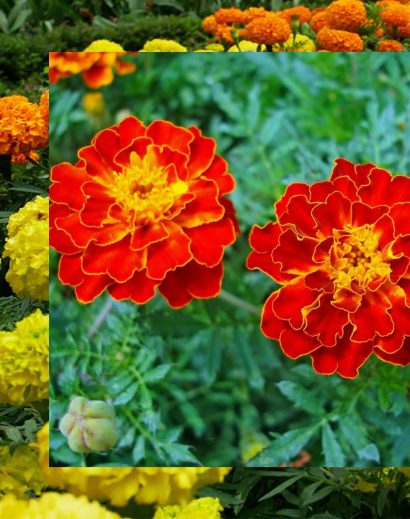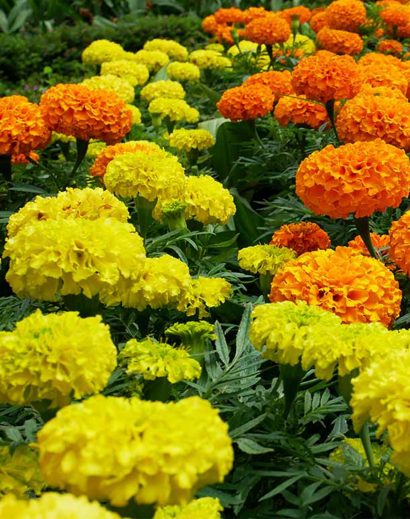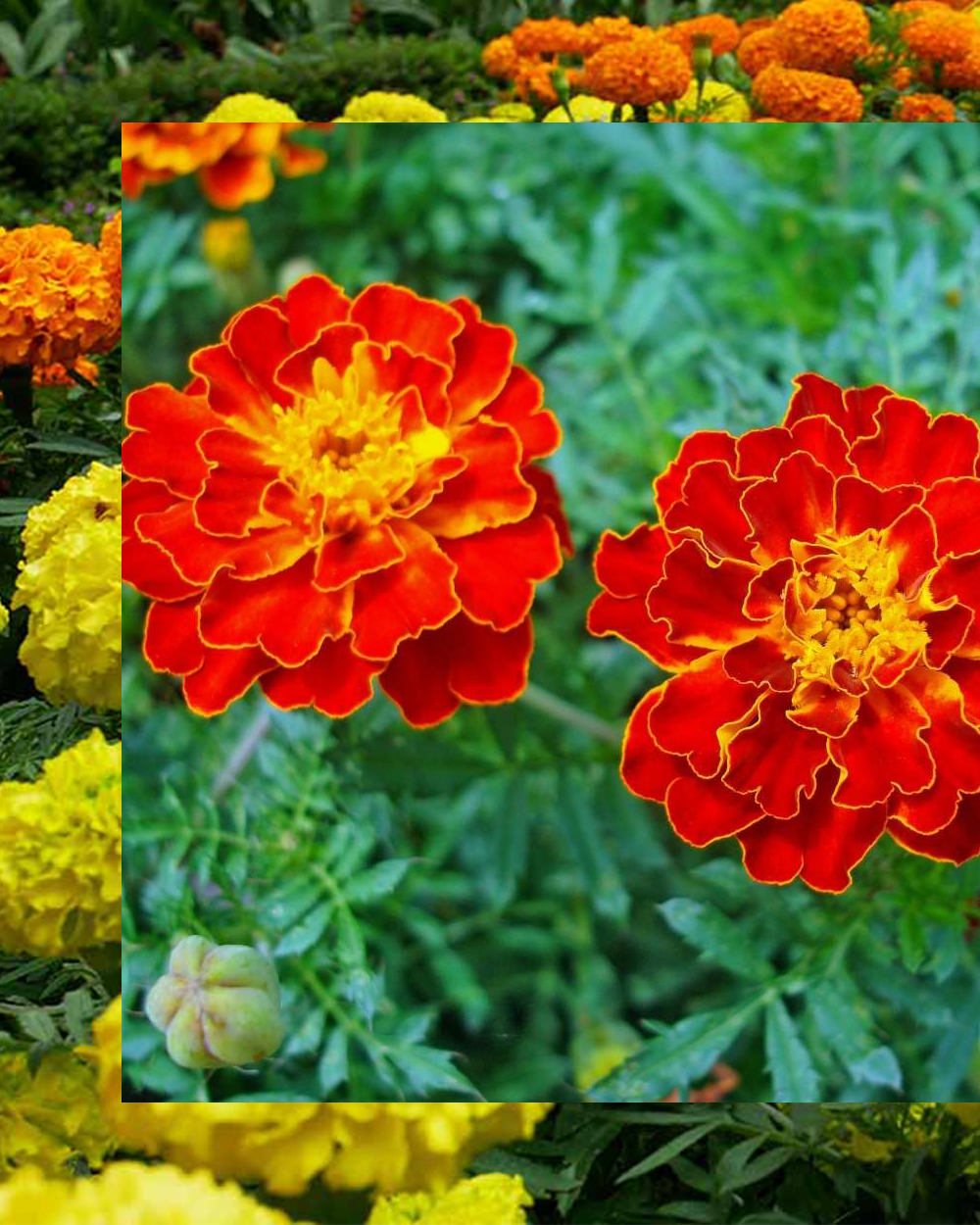Marigold is a common flowering plant known for its bright and colorful flowers. It belongs to the genus Tagetes and is native to North and South America, although it is now cultivated in many parts of the world. Marigolds are popular in gardens, landscaping, and as decorative plants due to their vibrant orange, yellow, and sometimes red or maroon flowers.
Marigolds are vibrant and cheerful flowering plants known for their distinctive appearance and various species and varieties. Here is a detailed description of marigolds:
- Flowers: Marigold flowers are the most distinctive feature of the plant. They come in a range of vibrant colors, including bright orange, yellow, red, maroon, and even white. The flower heads are typically composed of multiple layers of petals, giving them a full and rounded appearance. The petals are often wrinkled or ruffled, adding to their visual appeal.
- Foliage: Marigold plants have green, fern-like leaves that are usually arranged alternately along the stems. The leaves are pinnate, with several pairs of smaller leaflets attached to a central stalk. The foliage serves as a backdrop to the colorful flowers and contrasts nicely with their vibrant hues.
- Size: Marigold plants vary in size depending on the species and variety. French marigolds (Tagetes patula) are typically shorter, ranging from 6 to 18 inches (15 to 45 cm) in height. African marigolds (Tagetes erecta) are taller, often reaching heights of 1 to 3 feet (30 to 90 cm). Signet marigolds (Tagetes tenuifolia) are usually compact and low-growing.
- Blooming Period: Marigolds are known for their long-lasting blooms, which typically start in late spring and continue through the summer and into the fall, depending on the climate. Deadheading (removing spent flowers) can encourage continuous blooming.
- Scent: Some marigold varieties, particularly African marigolds, have a distinctive and somewhat pungent odor. The scent is often described as musky or spicy. This aroma can be a natural deterrent to some garden pests.
- Varieties: There are numerous marigold varieties available, each with its own unique characteristics. Some popular ones include French marigolds, which have smaller flowers and a bushy growth habit, and African marigolds, known for their large, showy blooms. Signet marigolds have smaller, finely divided leaves and dainty, single-petaled flowers.




Reviews
There are no reviews yet.